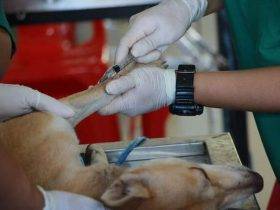Pet insurance dog
As a loving pet owner, ensuring your furry companion is healthy and happy is one of your top priorities. While preventative care like yearly checkups and vaccinations can help keep pets well, unforeseen medical issues or accidents are still possible. This is where pet insurance can offer important financial protection.
In this in-depth guide, we will explore everything you need to know about pet insurance for dogs. We’ll define key terms, compare coverage options, explain the claims process, and more. By the end, you’ll have a solid understanding of whether pet insurance makes sense for your pooch and how to choose the best plan.
What is Pet Insurance dog?
Put simply, pet insurance dog is a type of financial protection that helps dog owners cover veterinary costs. Similar to how human health insurance works, pet insurance reimburses a portion of incurred medical bills after any applicable deductible or copay amount has been met.
There are a few different types of pet insurance dog coverage options, which we will delve into in more detail later. In general though, pet insurance for dogs can help with expenses related to:
- Accidents or injuries (e.g. broken bones from falls or collisions)
- Illnesses (e.g. cancer, infections, diseases)
- Surgeries or hospitalization
- Prescription medications
- Wellness care like vaccinations or annual exams
Pet insurance dog aims to spare owners unexpected costs that could break the bank. The average vet bill for dogs is around $300-600 per year, but issues like cancer or a multi-day hospital stay can easily top $10,000 without coverage. Getting insured puts budgeting healthcare costs within reach.
Defining Key Terms
Before shopping around for plans, here are a few common pet insurance dog terms you need to understand:
Annual Premium: The amount you pay each year to maintain coverage. Premiums vary based on your chosen coverage limits and plan features.
Deductible: The amount you pay first each year or incident before insurance reimbursement kicks in. Plans have deductibles of $100, $250, $500, or more.
Coinsurance: The percentage of any vet bill you’re responsible for paying after meeting your deductible, such as 70% coinsurance where insurance pays the remaining 30%. Plans have 80-90% coverage typical.
Maximum Annual Benefit: The ceiling on total reimbursements per policy year. This may be $5,000, $7,500 or unlimited.
Pre-existing Conditions: Medical issues that arose or were diagnosed before coverage starts. Almost all plans exclude pre-existing conditions from coverage.
Lifetime Maximum Payout: The maximum amount a policy will reimburse over the lifetime of the pet, often around $15,000-25,000.
Knowing the definitions and options ahead of time helps you compare plans accurately based on your pet’s needs and budget.
Choosing the Right dog Coverage Level
Pet insurance provides different coverage tiers to suit all budgets and protection needs. Understanding the main levels can help ensure you select the appropriate plan:
Accident-only: As the name suggests, these basic plans only cover injuries from accidents. Vet bills for illnesses are not covered. Premiums are less than other options.
Accident and Illness: The mid-tier choice, it reimburses both injuries and illnesses but may limit payouts for certain conditions. Most common type chosen due to balanced pricing and coverage.
Comprehensive: The premium option provides the broadest illness and accident coverage with higher reimbursement limits and fewer condition restrictions. Comp plans also cover wellness and preventative care.
The right level depends on your finances and risk tolerance. Less costly accident plans may suit low-risk pets, while comprehensive is worth consideration for breeds prone to costly conditions. Discuss your dog’s needs honestly with providers.
Key Factors When Comparing dog Plans
Once you have an idea of your coverage preferences, start gathering rate quotes from multiple pet insurance companies to compare policies side-by-side. Focus on the following factors:
- Annual premium cost – Obvious but important to factor in. Rates differ greatly between carriers.
- Deductible options – Higher deductibles lower premiums but require meeting more of the bill yourself each incident.
- Coinsurance percentage – Higher coinsurance shifts more of costs to you after the deductible is met.
- Maximum payout caps – Consider lifetime and annual limits to gauge long-term protection.
- Pre-existing condition exclusions – Make sure ongoing issues are covered or you may be denied future claims.
- Additional services – Some plans cover boarding fees if you’re hospitalized or lost pet finding services.
- Provider network – Check that your regular vet is in-network for plans if you want discounting.
Doing price comparisons between at least 3-5 top companies helps ensure you find the best value plan structure to meet your dog’s situation. Don’t forget to factor in any additional perks or services into your choice.
The Claims Process
Now for the comforting part – filing a claim is easy once you decide on an insurance provider. Here’s a typical overview:
- Visit your vet. Have any medical issues for your dog diagnosed and treated as normal.
- Request an itemized invoice. Your vet will provide documentation of the provided care and services rendered.
- Submit claim to insurance provider. Log in to your member portal or mail/fax/email the claim form and invoices within 120-180 days of care.
- Processing period Claims are usually processed within 10-14 business days. Expect to submit additional documentation for exceptions.
- Issued reimbursement. Once approved, you’ll receive a check in the mail or reimbursement via online payment for qualified costs minus your deductible and coinsurance share.
- Repeat as needed Continue submitting new claims each year or incident, enjoying financial aid along your dog’s healthcare journey.
The whole process is designed to be straightforward. By policy fine print and utilizing your provider’s claims support staff, filing claims becomes routine for getting your vet bills subsidized.
Is Pet Insurance Worth It?
For many owners, the peace of mind provided by pet insurance makes the annual premium worthwhile. But to decide if it’s truly beneficial for your furry friend’s situation, consider these key points:
- Breed/age/lifestyle impact risks. Higher-risk breeds may make insuring prudent as they’re prone to certain medical issues. Likewise for older or active dogs facing injury potential.
- Deductible matches your emergency fund. The deductible amount shouldn’t break the bank so claim payouts actually help versus being unaffordable out-of-pocket.
- Long-term costs are covered. The guaranteed renewability of pet policies ensures coverage remains even if medical issues emerge compared to paying continually rising vet bills alone.
- Prevent losing your pet for financial reasons. Without insurance, owners may decline recommended care due to too-high out-of-pocket costs, raising surrender/euthanasia risks in a medical crisis.
Overall, taking advantage of the financial protection pet insurance offers is worthwhile for veterinary peace of mind, responsible pet ownership, and ensuring cost isn’t a barrier that prevents your dog getting the best medical care available. Compare premium costs to uninsured risks for your individual situation.
Final Thoughts
With a bit of upfront research, finding the right pet insurance dog plan to suit your budgeted needs can provide invaluable coverage for a furry family member’s healthcare expenses. Consider the following tips as you decide:
- Shop multiple providers for the most competitive rates and coverage structuring.
- Read all policy details and ask carriers about any unclear fine print beforehand.
- Discuss your specific dog’s breed-related conditions with respective underwriters.
- Ask about telehealth plans if remote veterinary consultations appeal to you.
- Insure proactively rather than waiting for issues to arise and be denied due to pre-existing conditions.
Overall, an affordable pet insurance dog policy helps ensure cost never prevents a dog from receiving appropriate medical attention. By taking the time to select the best match, you’re providing the ultimate gift of your pet’s well-being long into their forever home with you.






Leave a Reply